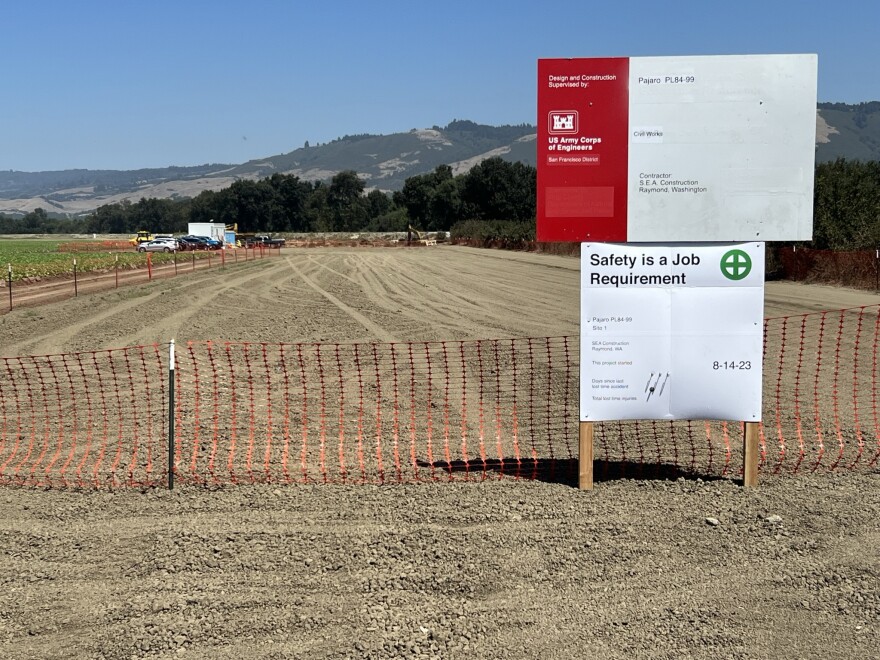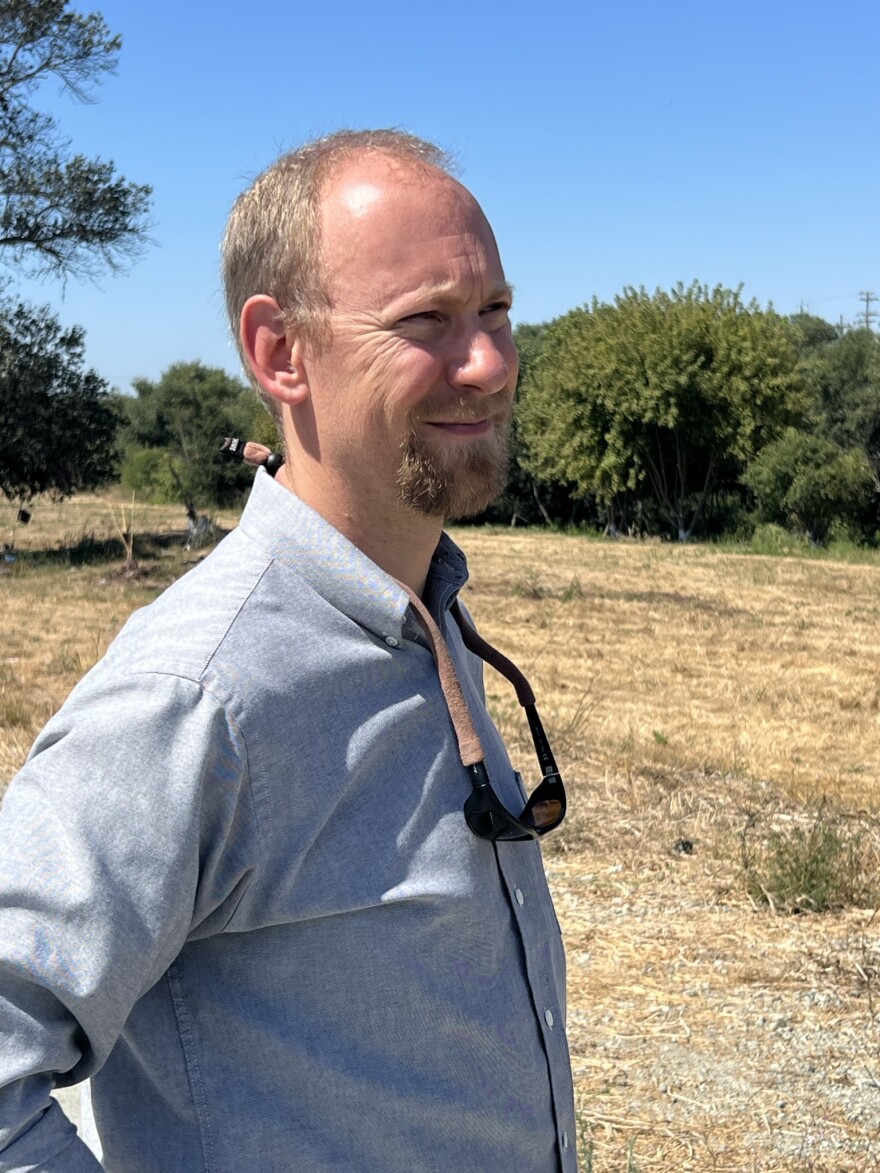Crews are about to begin the major phase of repairs on the Pajaro River levee, which failed in March, flooding the town of Pajaro. After months of planning, construction will begin in the coming weeks on the $20 million project overseen by the U.S. Army Corps of Engineers. But once the project is complete, residents will not be much safer than they were last year.
That is because the repairs are merely aimed at restoring the levee system to its condition before the flood. A long-awaited upgrade — first authorized by Congress in 1966 — is still years away.
“I'm not going to sugarcoat it. We still have an old, aging levee system that needs to be rebuilt,” said Mark Strudley, Executive Director of the Pajaro Regional Flood Management Agency. “I can't, with a clear conscience, tell the community not to be worried.”

The March flood was the fifth time the levee failed since it was built in the 1940s. Despite the congressional authorization nearly 60 years ago, funding to replace the levee has repeatedly taken a backseat — usually to flood protection projects in more affluent areas.
Last year, the project finally won $149 million in funding under the Bipartisan Infrastructure Law, along with a $140 million commitment from the state–enough to move forward on the $400 million reconstruction. But officials said it still would take another 10 years to complete.
After the March flood, which drove some 3,000 residents from their homes and spotlighted the inequities in poorer communities like Pajaro, a parade of politicians pledged to try and shorten the timeline.
“It's now our job to make sure that tragedy doesn't strike again,” said Sen. Alex Padilla at an April 12 news conference. “We'll continue to work together to ensure that the Biden administration expedites construction funding and protects this community the way it deserves.”
That same day, Rep. Jimmy Panetta said in an interview that the prospects for speeding up the project were looking good.
“Everything's starting to line up here,” he said. “We just can't give up, and we've got to keep up the pressure.”
Neither Padilla nor Panetta’s offices responded to requests for comment.
Meanwhile Strudley helped to lead an effort to at least include elements of the upgrade into this summer’s repairs. But like everything else about the Pajaro levee, the plan hit a wall of realities.

For one thing, Strudley said, federal budget rules prevented the Army Corps from using repair funds to replace the levee. But there are other, more practical issues.
“We collectively need to go through acquisitions of property to make this project move forward. There are utilities that need to be moved. There's no way to advance that at a quicker pace than we're doing now,” he said.
For Pajaro residents like Leonardo Torres, who is still struggling between FEMA and insurance to get funds to rebuild his home, the pace of the levee project is the latest in a long line of frustrations
“They have no respect for this community, period,” he said. “I mean, if this will be a much richer neighborhood, I'm pretty sure they will be more careful about what they're doing.”
Strudley said he feels the community’s pain.
“If I were a community member, I would be frustrated just like they are. They’ve been living with these old levees for decades,” he said. “The sad truth is that any project of this scale is going to take many years to build.”
Strudley said there still are some opportunities to speed up the timeline. A bill pending in the state legislature would allow planners to waive some of the permitting for the project, similar to an executive order signed by Gov. Newsom this month to speed up the emergency repairs.
Meanwhile, Rep. Zoe Lofgren has requested $200 million in federal funding to help streamline the Army Corps contracting for the reconstruction. A House staffer said it is Lofgren’s largest such request for Fiscal 2024, but it is still bottled up in the larger Congressional budget battles.
Even if all of those efforts are successful, Strudley said they would only shave a few years off of the project. But he still believes the effort has turned a corner.
“I know that there's a lot of pessimism out there, and it's understandable because of the tragedy, because of the devastation, it's unthinkable. But ultimately, we do have a rosy future. It's a little bit in the distance here,” he said
That means that this winter, Strudley and his team will once again be patrolling the 13 miles of levee with each storm, trying to shore up weak spots and prevent another flood.
And the people of Pajaro will spend another season on edge, just as they have for decades.







